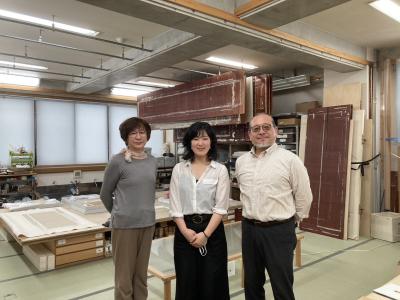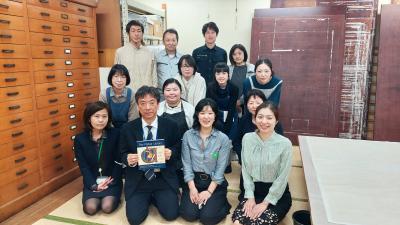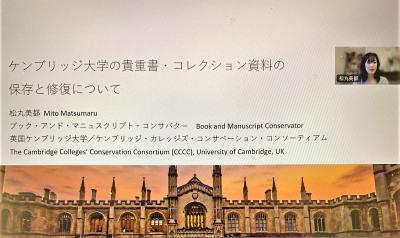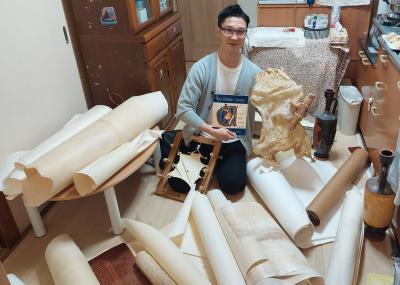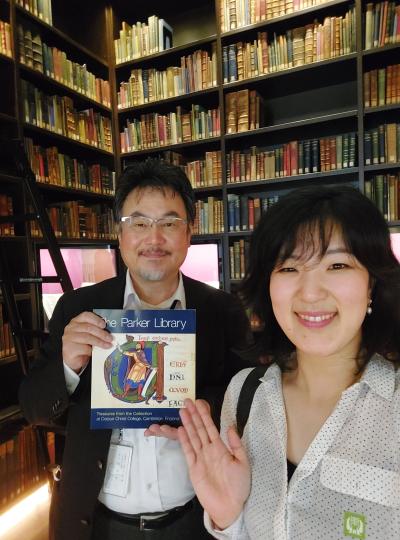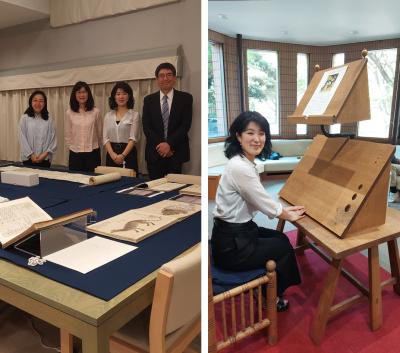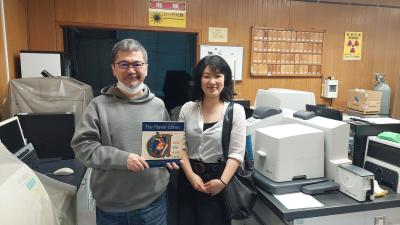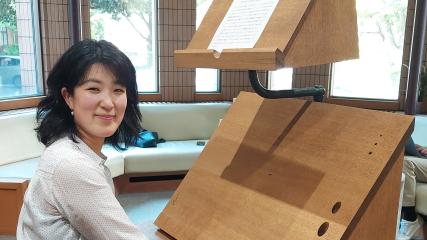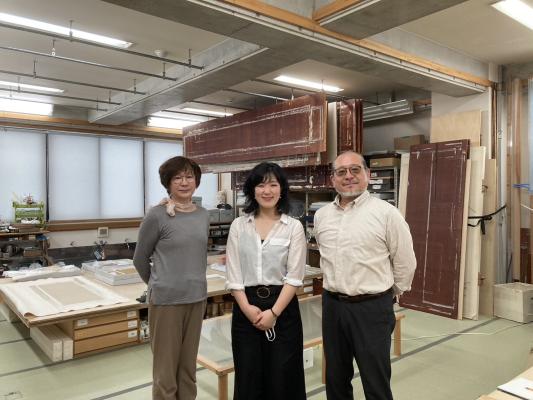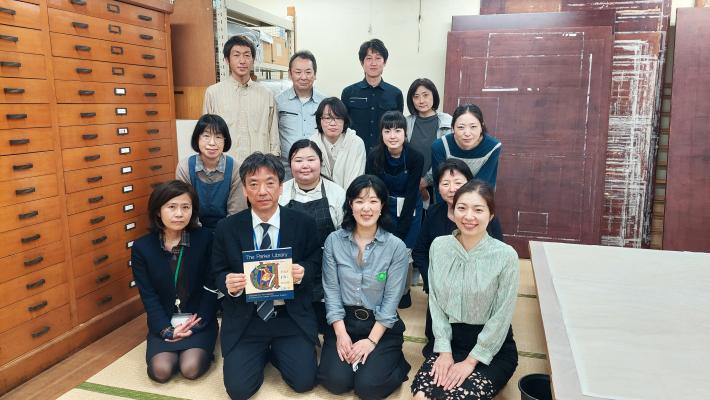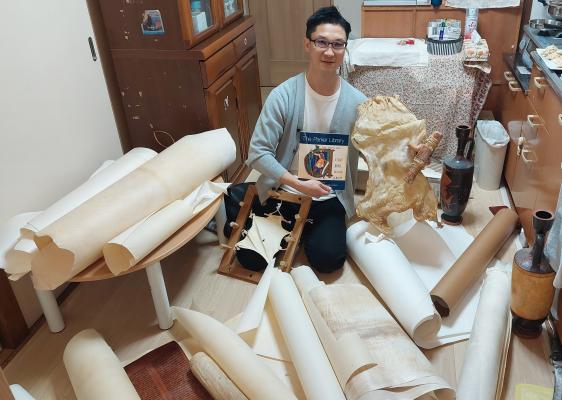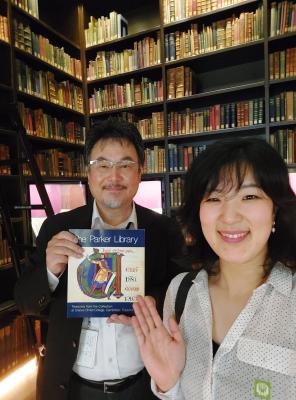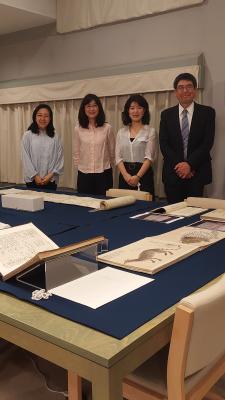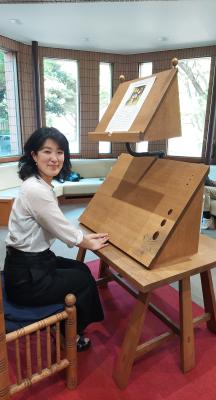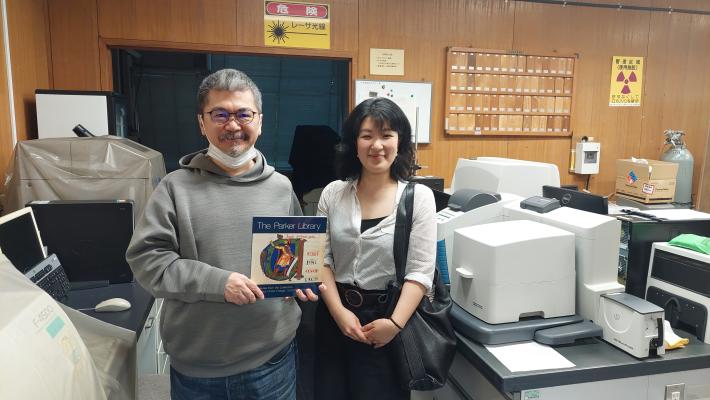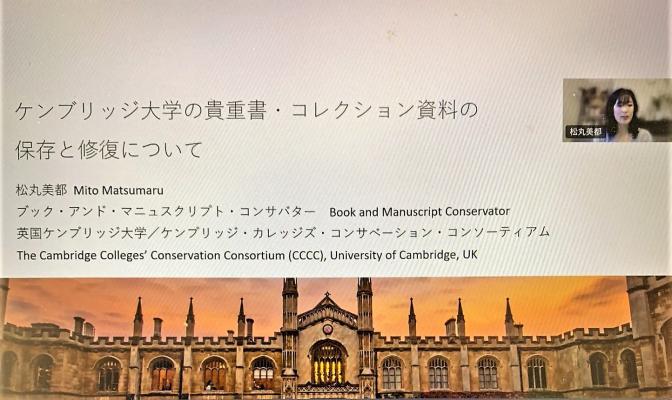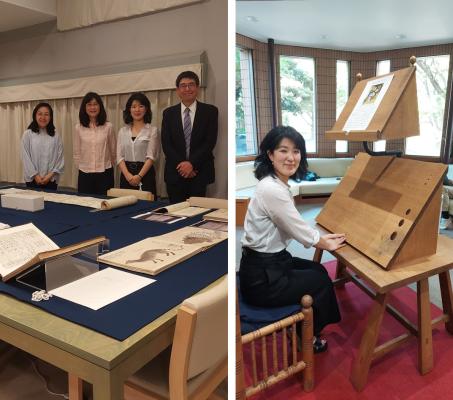The Parker Library Meets Japan
After many years I finally returned to Japan last May to spend a relaxing holiday with my family and friends. I also took the opportunity to reconnect and exchange ideas with my colleagues in the museum, library, and conservation fields. Of course, I couldn't help but boast (a little) about the Parker Library and the work we do at the Cambridge Colleges' Conservation Consortium (CCCC). I was happy to present the Parker Library's book on Treasures from the Collection as little presents (omiyage in Japanese) to those I visited. They showed great interest in the Parker collection and were delighted to initiate a connection between Cambridge and Japan. Many were thrilled to learn that the Augustine Gospels they had seen while watching King Charles’ coronation ceremony came from the Parker Library.
Let me share some photos from my visit below:
Conservation Studio
My visits started with Mr Masaki and Mrs Ikuko Handa at Handakyuseido Co. Ltd., a conservation studio accredited by the Association for Conservation of National Treasures in Japan. When I was a student in Japan, I had the great privilege of learning in this studio where I witnessed and experienced their high standards of conservation skills and ethics. Their commitment to preserving cultural treasures with the utmost respect, as well as upholding Japanese craftsmanship traditions, are truly inspiring.
Mrs Ikuko Handa, Ms Mito Matsumaru and Mr Masaki Handa in the Handakyuseido conservation studio.
One of their recent conservation projects is the twelvth-century Fugen Bosatsu (Samantabhadra Bodhisattva), a registered Japanese National Treasure owned by the Tokyo National Museum.
National Diet Library
I then met with the Preservation and Conservation team at the National Diet (Parliament) Library. We shared our experiences and our respective ways of working, and discussed some of their recent projects from both the Western and East Asian conservation sections. I also had the chance to see their impressive collection of old Japanese movable type that consists of thousands of different alphabets needed for printing the Japanese language.
Mito Matsumaru presenting a little gift to Preservation and Conservation team at the National Diet Library.
The National Diet Library is a leading conservation institution for books and library collections not only in Japan but also throughout the region. They are the IFLA PAC Regional Centre for Asia, showcasing their expertise and influence.
Earlier this year, the National Diet Library invited me to give an online presentation about the conservation work done at the Cambridge Colleges’ Conservation Consortium. It was attended by over 350 people from various institutions across Japan. This remarkable response demonstrates the strong interest in the conservation of Western books and manuscripts within the Japanese collection care and academic community.
Mito Matsumaru presenting the work done at the Cambridge Colleges’ Conservation Consortium at an online event organised by the National Diet Library, Japan.
Parchment researcher and maker
During my visits I was delighted to meet with Mr Kenji Yagi, a parchment researcher, maker and collector. He has been researching parchment-making traditions and techniques from around the world and has a profound fascination with the Parker manuscript collection! The depth of his knowledge and passion for parchment is truly impressive. He even experiments with various techniques and makes parchment at home. He recently published an exhaustive handbook on parchment history, techniques and uses, Everything about Parchment (羊皮紙のすべて) and The World of Parchment (羊皮紙の世界), available in Japanese. His website Parchment Workshop is a valuable starting point for Japanese students and members of the public interested in learning about parchment and its uses.
Mr Kenji Yaki in the middle of rolled up parchment sheets.
Morrison Library, Toyo Bunko Library and Museum
I also paid a visit to my ex-colleagues at the Toyo Bunko Library and Museum to say hello – or rather, Konnichiwa. The Toyo Bunko Library collection boasts one of the largest Oriental Studies libraries in the world. Their Morrison Library is a haven where you can easily forget that you are right in the heart of Tokyo.
Visiting the Morrison Library, part of the Toyo Bunko Library and Museum.
Keio University Library, Mita Media Center
I was warmly welcomed by the team of the Keio University Library Mita Media Center. Keio University boasts a fantastic collection of rare books and manuscripts from all over the world, including Incunabula, a medieval Genealogical Roll of the Kings of Britain on parchment, as well as precious East Asian manuscripts. I was impressed by their dedication to care and responsibly preserve the originality of each item. On a more playful note, they have built a bespoke medieval scriptorium and use it to demonstrate how medieval manuscripts were made.
Visiting Keio University Library Mita Media Center and practicing at a writing desk that is built according to medieval examples.
Tokyo University of the Arts
Last but not least, I paid a visit to the Tokyo University of the Arts (Geidai) where I studied for six years. Geidai is situated in Ueno, the heart of cultural institutions in Tokyo, and it offers Master's and PhD level conservation courses with specialisations in Japanese painting, oil painting, sculpture, crafts, buildings, conservation science, and preventive conservation. It was lovely to return to this place and chat with my former teachers at the Conservation Science lab where I once belonged.
Visiting the analytical lab at Conservation Science department of Tokyo University of the Arts.
There is a touching fact that resonates across those involved in cultural heritage regardless of location: a deep respect for objects and a sense of responsibility for their care. The Western conservation field has inspired the establishment of conservation approaches in Japan, which have been integrated with the long-standing Japanese appreciation for cultural heritage. Over the past few decades, Western conservators have also drawn inspiration from Japanese techniques, tools, and materials for book and paper conservation. For example, here at the Cambridge Colleges’ Conservation Consortium, we use specialist Japanese paper to help care for and restore items in the Parker Library collection. No matter how far apart we may be, the world is interconnected, and through knowledge exchanges we all have the capacity to influence and learn from each other. This trip was not only one down memory lane but it also allowed me to initiate or rekindle links with the Japanese book conservation and library community and plant the seed for future exchanges and collaborations with both the Parker Library and the Cambridge Colleges’ Conservation Consortium.
Finally, I would like to extend my gratitude to the Parker Library for providing me with small presents, omiyage, to present to my Japanese contacts.
Mito Matsumaru ACR, is a book and manuscript conservator at the Cambridge Colleges’ Conservation Consortium (CCCC) where she takes care of fifteen colleges’ libraries and archives collections including the Parker Library collection.

